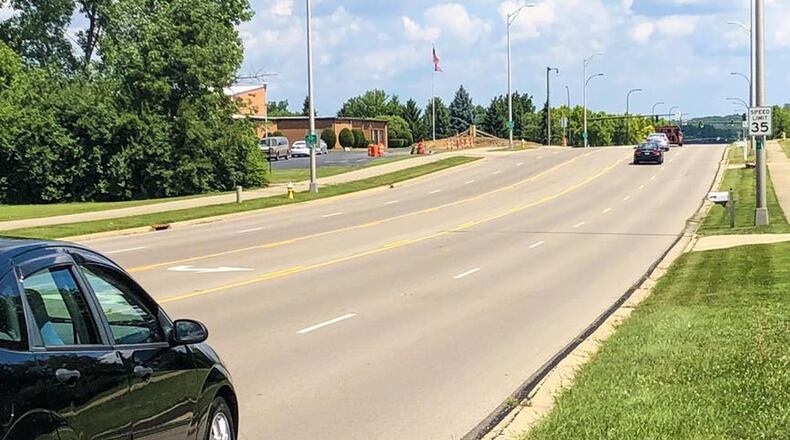MORE: Kettering’s School of Advertising Art to build student housing next door
“This project is important for the City of Kettering and the City of Beavercreek, as we see continued growth in the Miami Valley Research Park,” said Assistant City Manager Steve Bergstresser. “If you take all the employees collectively in the park, it’s probably our largest employment center,” he said.
City officials called the hearing at the Charles I. Lathrem Senior Center to explain the plan to widen County Line from the intersection of Dorothy Lane to the intersection of Vale Drive.
MORE:Enon police officer cleared in Perry Twp. stabbing investigation
Additional lanes would help accommodate traffic, said city officials, who want to widen the road from three to five lanes, replace sidewalks and adjust street lights. The work would result in two through lanes in each direction, plus a center turn lane.
Most of the residents who attended the meeting vehemently opposed the project, saying it would cause problems ranging from excessive speed to increased traffic volume.
Several residents said they would use a comment form that was provided to lodge their complaints and try to get the project put on hold.
Bill Drake lives on County Line Road and expressed concerns that the traffic analysis might be misleading. The project, in his estimation, is flawed and will cause “excessive traffic in the area.”
Another concern was lodged by a resident, who said, “I’ve lived here all my life so I know that County Line is a drag racer. If widening the road will cause it to bring more fluidity, will it be like I-675? They drive like crazy.”
Kettering also plans to extend the road to make room for business growth.
The city recently purchased 300 undeveloped acres within the Miami Valley Research Park for new jobs and new developments.
A traffic evaluation for the project shared with those in attendance said that the area is a “critical corridor to access the Miami Valley Research Park.”
The evaluation showed a traffic count in the area to be 16,260 vehicles per day in 2015 and an estimated 21,000 per day in 2035. An analysis of travel time on Tonawanda Trail states that the typical travel time during morning peak traffic is 131 seconds. The completed project will lower that time to 107 seconds.
MORE:Carillon Park’s newest building is about to rise
Nick Smith, assistant city engineer for Beavercreek, and John Sliemers, assistant city engineer for Kettering, said many of the concerns they heard Wednesday revolved around the amount of traffic and people being able to pull in and out of driveways and adjacent streets. They also mentioned a need for a turn signal at the intersection located at Vale Drive.
“This project is in the preliminary stages of design, and we will take back what we heard tonight and re-evaluate what we can concerning the traffic signal at Vale Drive,” Sliemers said. “We heard many other comments, and as a design team with Beavercreek and Kettering put together, we will evaluate what was said and proceed forward, taking these things into account.”
MORE:Two in custody for Riverside concession stand break-in
Federal and state funds will cover approximately 60 percent of the project, and the remaining cost will be split between the City of Kettering and the City of Beavercreek.
This project is expected to begin in spring 2021 and last about 18 months, with completion by fall 2022.
About the Author
